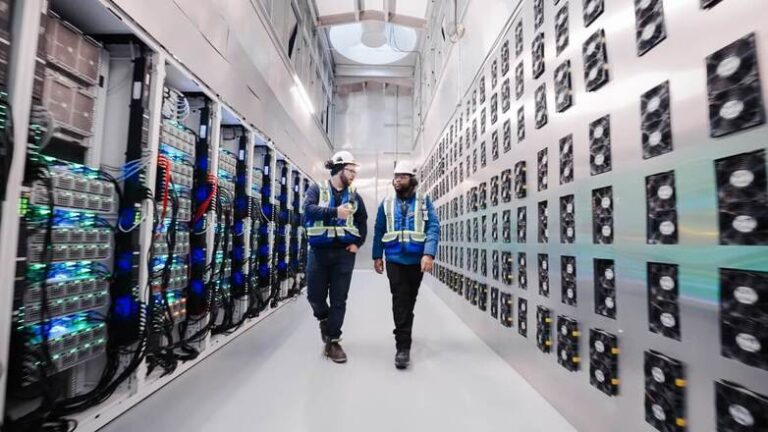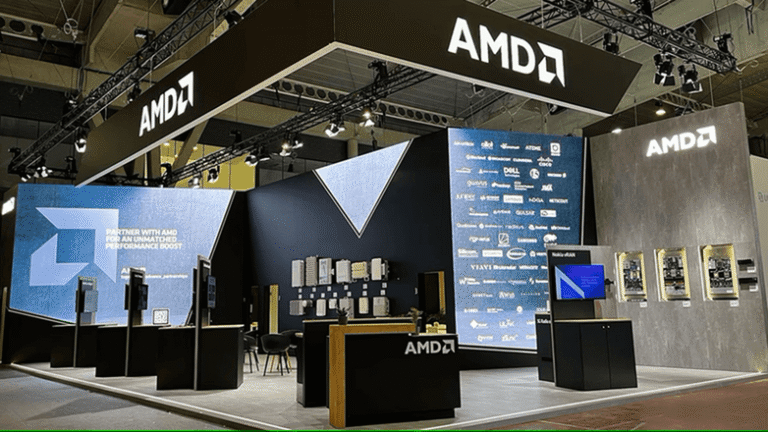
GMI Cloud is deepening Asia’s role in the global AI infrastructure race with a new half-billion-dollar AI Factory in Taiwan, built around NVIDIA’s newest Blackwell architecture. The company, one of the fastest-growing GPU-as-a-Service providers in the region and an official NVIDIA Cloud Partner, positions the facility as a cornerstone for sovereign AI development at a time when demand for high-density compute capacity is escalating across the public and private sectors.
The project underscores a shift toward regional AI infrastructure that combines domestic data control with access to U.S.-based accelerated computing technologies, reflecting a broad reconfiguration of the international AI supply chain.
At full buildout, the Taiwan AI Factory will house more than 7,000 NVIDIA Blackwell Ultra GPUs integrated across 96 GB300 NVL72 racks, pushing the design envelope for next-generation AI inference and multi-modal processing.
The AI system, operating at 16 megawatts, is engineered to reach close to two million tokens per second for large-scale AI workloads, placing it among the most advanced GPU clusters in Asia. Its network backbone incorporates NVIDIA NVLink, NVIDIA Quantum InfiniBand, NVIDIA Spectrum-X Ethernet, and NVIDIA BlueField DPUs, creating a cohesive high-throughput, low-latency data path designed specifically for enterprise AI and generative model fine-tuning.
GMI Cloud frames the facility as a blueprint for regional AI modernization, aiming to support sectors that increasingly depend on real-time analytics, autonomous systems, and simulation-driven decision-making. According to CEO Alex Yeh, thousands of synchronized Blackwell GPUs will form the computational core for what the company calls a new model of sovereign AI infrastructure – one capable of absorbing local data, meeting regional regulatory expectations, and powering workloads that previously required cross-border compute resources.
The significance of the new AI Factory is reflected in early partnerships that showcase how accelerated infrastructure reshapes workflows across cybersecurity, manufacturing, data operations, and energy systems. Trend Micro, which has been developing digital twin–driven security modelling, will use the platform to simulate and validate cyber risk scenarios without exposing live production environments. This approach combines NVIDIA AI Enterprise software, NVIDIA BlueField, and GMI Cloud’s compute to stress-test complex environments at a fidelity and speed not achievable with conventional security tooling. By partnering with Magna AI, Trend Micro aims to create an adaptive security ecosystem that continuously models evolving threats.
Smart Manufacturing Systems
Hardware manufacturer Wistron is adopting the AI Factory as a foundation for smart manufacturing systems that integrate computer vision, predictive maintenance, and continuous simulation. GMI Cloud’s infrastructure allows Wistron to train and deploy models directly onto active production lines, reducing downtime and enabling automated quality control loops. This shift toward real-time, in-factory inference reflects a broader industry trend where manufacturers rely on tightly integrated AI stacks to optimize throughput and reduce operational variability.
In data infrastructure, VAST Data will provide the high-performance storage substrate necessary to sustain exabyte-scale pipelines. Its architecture aligns with the bandwidth and concurrency demands of the Blackwell platform, ensuring rapid retrieval for training and inference workloads that benefit from high-parallel access paths. As model sizes grow and the ratio between compute and data intensity shifts, VAST Data’s role is to eliminate I/O bottlenecks and maintain predictable performance at scale.
A third pillar comes from TECO, which is supplying energy optimization systems and modular data center solutions. Leveraging decades of expertise in electrification and industrial equipment, TECO is transforming physical infrastructure – motors, HVAC systems, drives, and power distribution – into digitalized assets that can be orchestrated within the AI Factory. This results in a more responsive energy architecture capable of supporting fluctuating AI loads while enabling new Energy-as-a-Service delivery models for global customers.
Together, these deployments highlight how AI factories are evolving from conceptual frameworks into operational assets that fuse compute, data, and energy. The Taiwan facility represents a hybrid of regional autonomy and global technological cooperation, positioning Asia to accelerate its adoption of advanced AI while aligning closely with U.S. innovation cycles. NVIDIA’s regional leadership emphasizes that such factories represent a new stage in AI industrialization, where intelligence is produced much like conventional goods – through scalable, optimized, repeatable infrastructure systems.
As AI adoption shifts from experimentation to enterprise-level deployment, the GMI Cloud AI Factory presents a model for how organizations can combine high-performance GPU clusters with sovereign control, sector-specific use cases, and energy-efficient design. It reflects a larger structural change in global AI computing, where supply chains, regulatory environments, and scalability considerations increasingly determine where and how AI capabilities are built.
Executive Insights FAQ: NVIDIA Blackwell Architecture
How does Blackwell improve performance for large-scale enterprise inference?
Blackwell’s architecture is optimized for high-throughput inference with significantly higher tensor processing density, enabling faster token generation at lower cost per watt. Its design supports massive concurrent workloads typical of enterprise generative AI and multi-modal systems.
What advantage does NVLink provide in an AI Factory environment?
NVLink interconnects GPUs with extremely high bandwidth and low latency, allowing them to function as a unified compute fabric. This is essential for large model parallelism and for training or serving models that exceed the memory of a single GPU.
Why are Spectrum-X Ethernet and Quantum InfiniBand both used?
Quantum InfiniBand supports ultra-low-latency HPC-style GPU communication, while Spectrum-X Ethernet enables scalable, AI-optimized data center networking. Combined, they provide flexibility across AI, HPC, and enterprise workloads.
How does Blackwell architecture support multi-modal AI workloads?
With increased memory bandwidth, larger HBM configurations, and efficient tensor core designs, Blackwell GPUs can handle heterogeneous data streams – text, vision, audio, sensor data – without requiring separate hardware subsystems.
What operational efficiencies does Blackwell introduce for data centers?
Blackwell GPUs emphasize energy-efficient performance scaling, reducing the compute per watt cost. This allows data centers to increase AI capacity within the same or smaller power envelope, a critical factor as AI energy demands rise globally.





